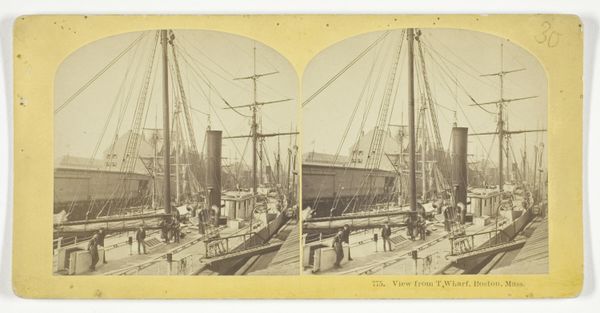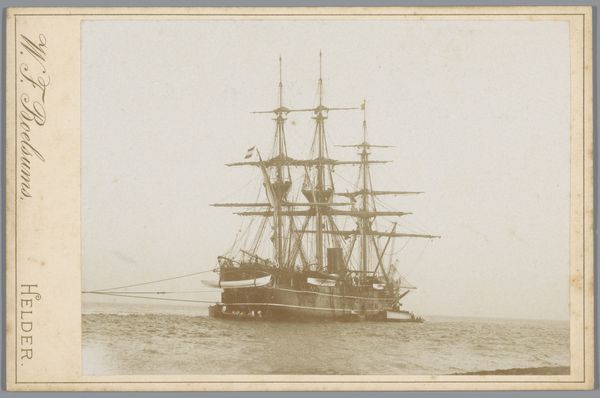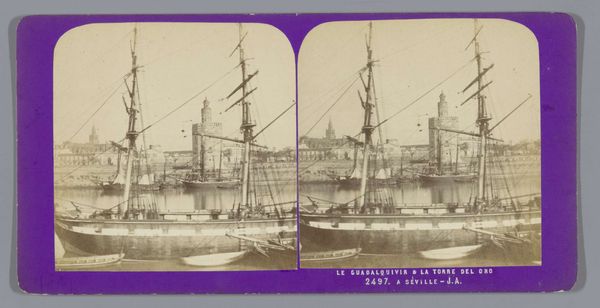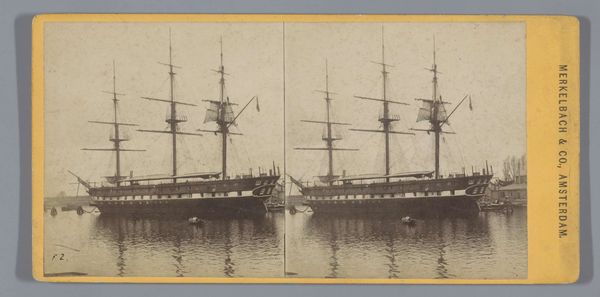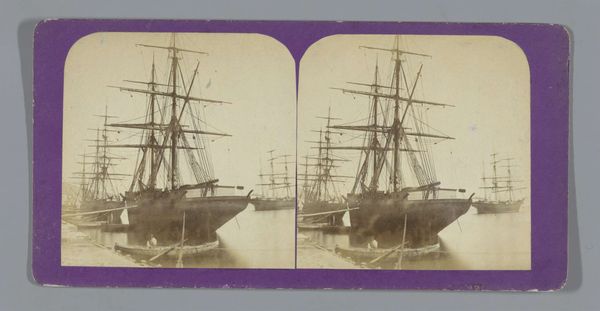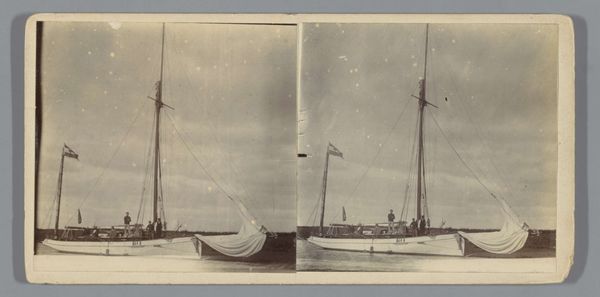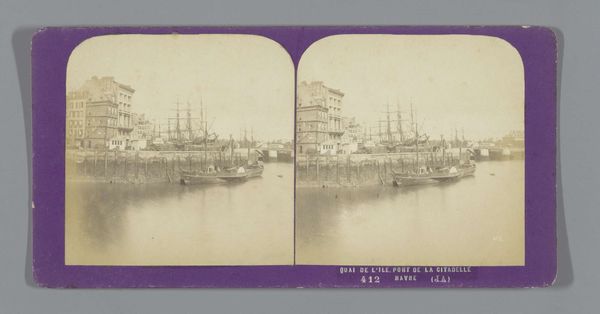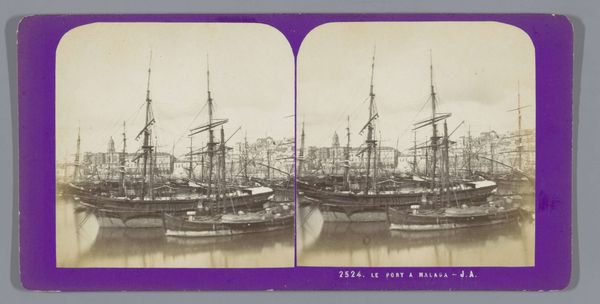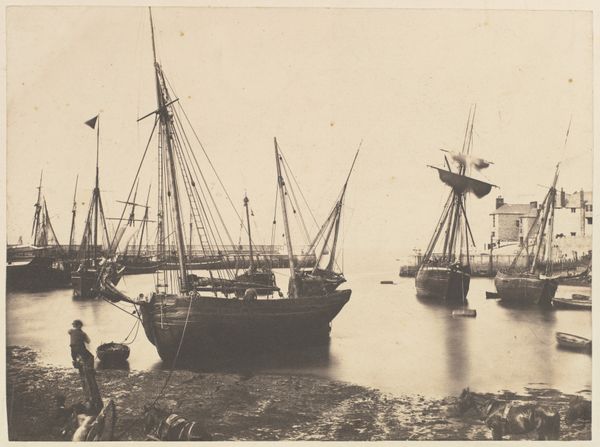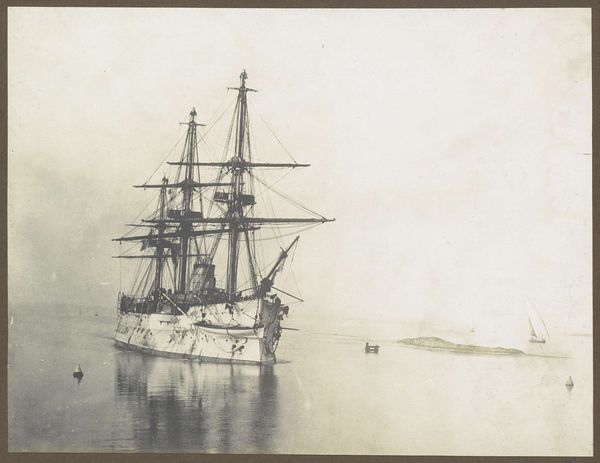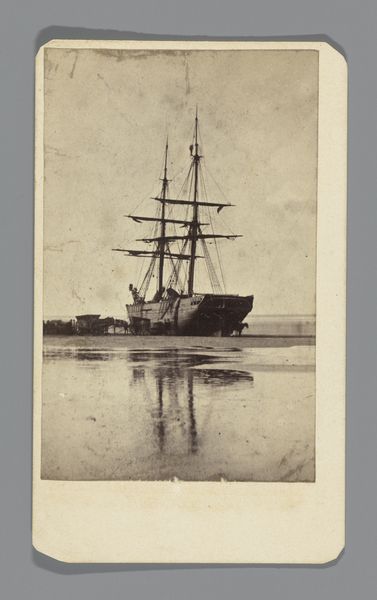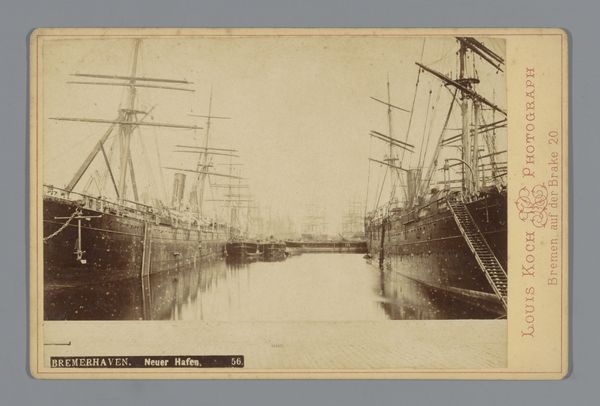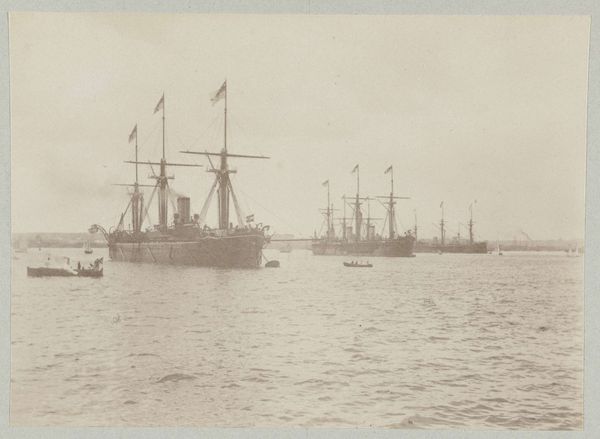
World's Columbian Exposition, Columbus' Caravel, "The Nina" 1887 - 1893
0:00
0:00
print, photography, photomontage
#
pictorialism
# print
#
landscape
#
photography
#
photomontage
#
cityscape
#
realism
Dimensions: 7.7 × 7.5 cm (each image); 8.9 × 17.8 cm (card)
Copyright: Public Domain
Curator: Looking at George Barker's stereoscopic print, "World's Columbian Exposition, Columbus' Caravel, 'The Nina'," made between 1887 and 1893... what's your immediate impression? Editor: A sepia dream, really! It feels ancient, like a ghost ship sailing through time. The slight blurriness only adds to the dreamy quality; that caravel feels more like a figment of history than an actual replica. Curator: Well, this photographic print wasn't necessarily aiming for pinpoint accuracy. As a stereograph, it offered viewers a sense of depth, immersing them in a romanticized vision of Columbus' ship as exhibited at the World's Fair. Editor: Romanticized is the word! Knowing it was part of the World's Columbian Exposition really colors my perspective. It speaks to the way history can be curated, packaged, and sold. This "Nina" is less about authentic nautical history, and more a prop in America's unfolding story. Curator: Precisely. Barker was capitalizing on a particular moment. Consider the materials themselves— photographic paper, the chemicals involved in the development process, the printing techniques— each element contributes to how the subject matter is presented to a mass audience, subtly reinforcing national narratives. Editor: Absolutely. It's fascinating how the mass reproduction and distribution of these images turned the event and the reconstructed caravel into tangible souvenirs, like pieces of the dream of progress itself. And what kind of labor went into the stereoscopic print industry at this time? These photos aren't just about the glory of exploration, they are also artifacts of American consumer culture! Curator: That's an important consideration. Barker's studio in Niagara Falls likely employed many hands to produce these images for sale. Also, observe the careful construction of the photograph itself – a type of photomontage created for distribution. Editor: The frame too adds to the allure; all the writing gives it a real period feel, despite the fact that photography itself was such a new invention at the time! The print is fascinating and unsettling all at once, as it exposes history to us filtered through its time of inception. Curator: Indeed. It's a testament to the complex layers of history, production, and reception that converge within this seemingly simple image. Editor: It's made me see that historical documentation—whether photograph, painting, sculpture or stereograph!—never presents us with pure facts; always shaped by ideology and design. Thanks for highlighting the significance, a lovely little journey into material culture and history!
Comments
No comments
Be the first to comment and join the conversation on the ultimate creative platform.
